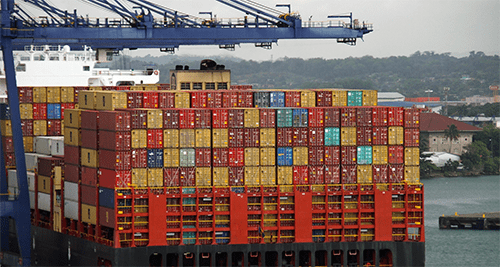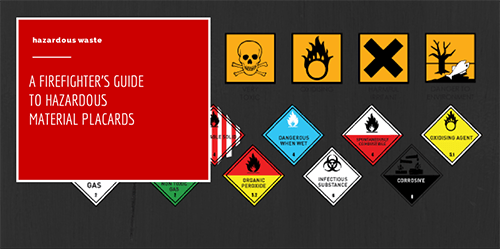Shipping hazardous materials is a challenging task. There are laws and standards that limit what can be shipped and what containers must be used. Hazardous materials like paint, chemicals, and batteries must be shipped in specific types of containers.
Containers for hazardous materials must meet precise specifications, like those from C.L. Smith. They can even be customized to fit unusual items and still be appropriate for hazardous materials. If you do not meet the requirements, there is a good chance that you could be fined. Learning the rules and regulations will help you avoid fines and returned items, too.
Choosing containers for shipping hazardous materials must be done with concern for the safety of everyone involved in every step of the packaging and transportation of the materials. These tips should help you successfully pick the right container for hazardous materials:
1. Avoid common mistakes
All too often, companies will make the same mistakes when they are packaging hazardous materials. The common problems include choosing packaging materials that are not meant for different materials and not using packaging materials in the way they were tested. Surprisingly, another common mistake includes shipping liquids in containers that are not leakproof.
Businesses also make mistakes with regard to regulations. Knowing them will keep fines away and help you better understand how to guarantee that your products will remain in the containers through the entire shipping process. For example, there are regulations about the cushioning material in some containers. Those materials should not be removed because they are specifically designed to keep hazardous materials in one piece.
Packages also need to be properly closed. When the correct container is selected, the container should be used correctly. This should include closing the container with the recommended amount of torque. If this isn’t done, the container could open and the hazardous material inside could spill.
2. Understand ground vs. air
Certain containers are designed for flight and some are designed for ground shipping. When you are packaging hazardous materials for shipping in the air, you must be sure that the container is specially designed for it. For example, if you are sending an acidic material through the air, you have to be sure that the chemical is allowed on an airplane. If it is, you have to be sure that you properly package the chemical in a container that is resistant to corrosion. The container also needs to have absorbent material and it has to be leak-proof.
If you are shipping via ground, the packaging rules are still strict but not as restrictive. Be sure you know when you should use corrugated boxes for outer packaging and when you need glass, plastic, or other materials on the inside.
3. Properly train employees
When your employees are properly trained, they know exactly what type of container to pick and how to properly package hazardous materials. The employees who should be trained include those who handle hazardous materials, transport materials, and prepare them for transportation. They also include those who inspect, maintain, test, and package materials, too.
There are a handful of different trainings for which employees should become certified. They need to know about the regulations and how they affect their job description. They should also be trained on safety measures and how to keep hazardous materials secure, both in basic awareness and in in-depth lessons.
4. Understand the 49 CFR
The United States has a collection of regulations that dictate the way that hazardous materials are shipped and packaged. The regulation is called 49 CFR, which involves shipping in, out, and within the US. There are nine volumes of regulations for shipping hazardous materials and the regulations are set by the US Department of Transportation.
The regulations are for all hazardous materials like gases, explosives, poisons, and radioactive materials, to name a few. They include how much of these materials can be shipped at a time and what type of packages can carry them, such as used IBC tote tanks. Businesses that ship hazardous materials should also know about the requirements for testing containers, documenting what is in them, and following safety procedures. Containers are all authorized by 49 CFR and they need to be used as they are tested.
5. Understand the UN Regulations
Outside of the United States, there are other regulations for international shipping. These are called United Nations Model Regulations and they are different from US regulations. While the rules are not law in every country, it is wise to follow them to keep hazardous materials and the people handling them safe. The UN regulations involve air transport and maritime transport.
6. Look for proper cushioning and interior materials
As you are choosing the correct container, be sure that it has the proper materials on the inside. For example, the container should have proper cushioning to protect the materials from breaking and absorbent matter to keep spills from exiting the container.
As soon as you choose the proper package for your hazardous materials, it is important that you package them correctly. It is also important that you close and secure the container, too. The container needs to be approved and you may only use it as it was designated to be used. To be approved for use, the container has to have been tested with a specific hazardous material. Once you’ve selected the container, you have to correctly mark it and follow all instructions for assembling, closing, and shipping. If there are torque regulations, those also need to be followed to prevent the materials inside from leaking. Any instructions need to stay in your business for a minimum of three years from the date the materials were shipped.
7. Include material safety data
Along with choosing the right container, it is important that the container and its contents are properly labeled. Material safety data sheets need to be included so that anyone who comes in contact with the container knows what to do if they are exposed to hazardous materials. The container should have the proper packaging label for US regulations or UN regulations.




